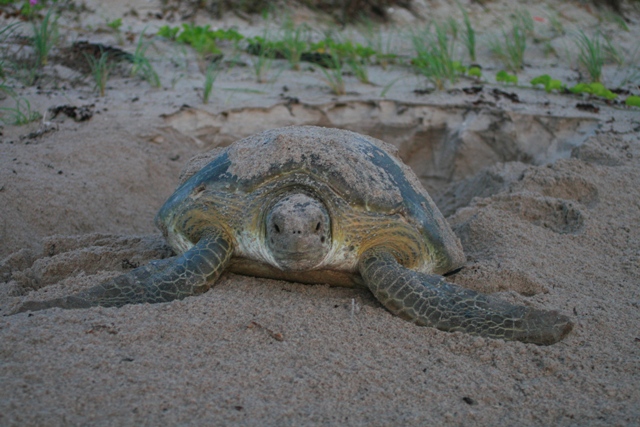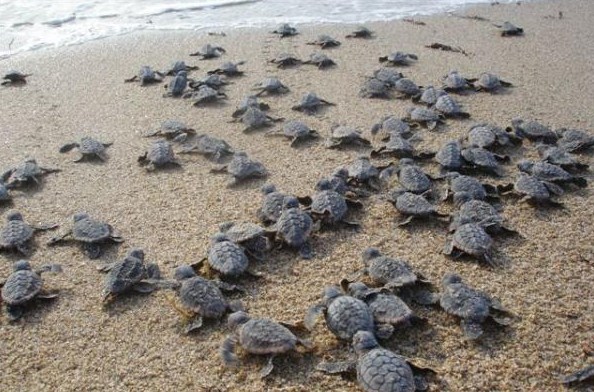Turtle nesting season starts May 1, and that means hundreds of sea turtles will be emerging from the surf to lay eggs on the beach in the next few months.
After incubating in the sand for about two months, the tiny hatchlings will break free and make an often treacherous crawl to the ocean, dodging predators, holes, trash and beach furniture. Tragically, some will also be led into harm’s way by beachfront lighting.
It’s estimated that only about one in 1,000 to 10,000 hatchlings will make it safely to sexual maturity.
Jennifer Winters, Volusia County's sea turtle Habitat Conservation Plan program manager, wants to improve those odds, and she could use the public’s help.
“We need everybody’s help to make this a safe and productive nesting season,” she said. “We encourage residents and visitors to respect our wildlife and ‘let the night provide the light.’”
“Artificial lighting is a human-made threat we can correct with minimal effort,” she noted. “Bright lights can prevent females from nesting, and they can confuse hatchlings, leading them away from the ocean and into the streets or storm drains. By simply redirecting lights away from the beach and turning them off when not in use, beachfront residents can help sea turtles survive.”
The county’s Environmental Management Division works with beachfront property owners throughout the year, educating them about the sea turtle lighting ordinance. During nesting season, residents are required to turn off, shield or redirect lights so they don’t shine on the beach.


Residents and visitors can also help save sea turtle lives by following these tips on the beach:
For more information about Volusia County’s sea turtle program, call 386-238-4668 or visit www.volusiaseaturtles.org. For questions about sea turtle friendly lighting, call 386-238-4773.